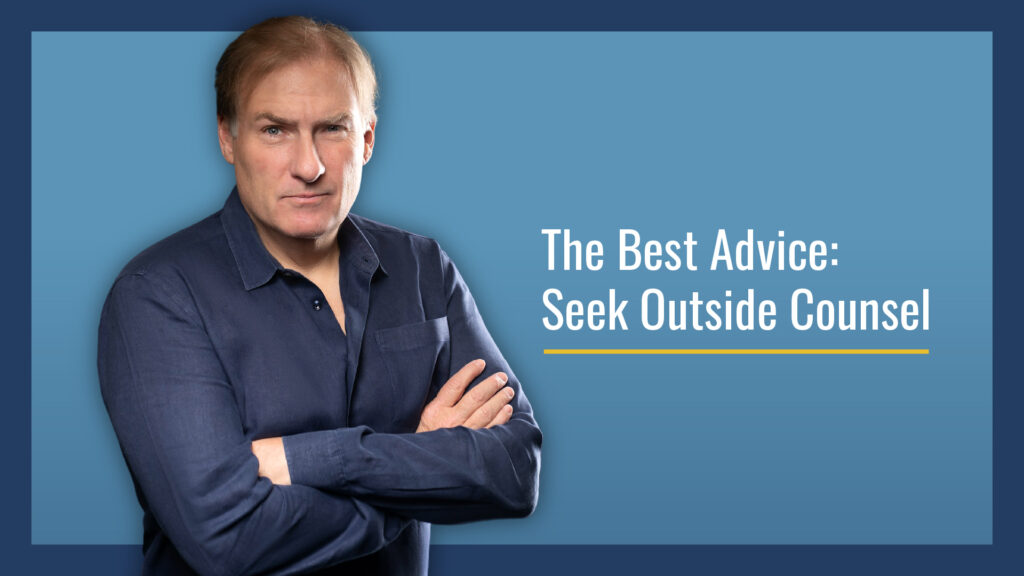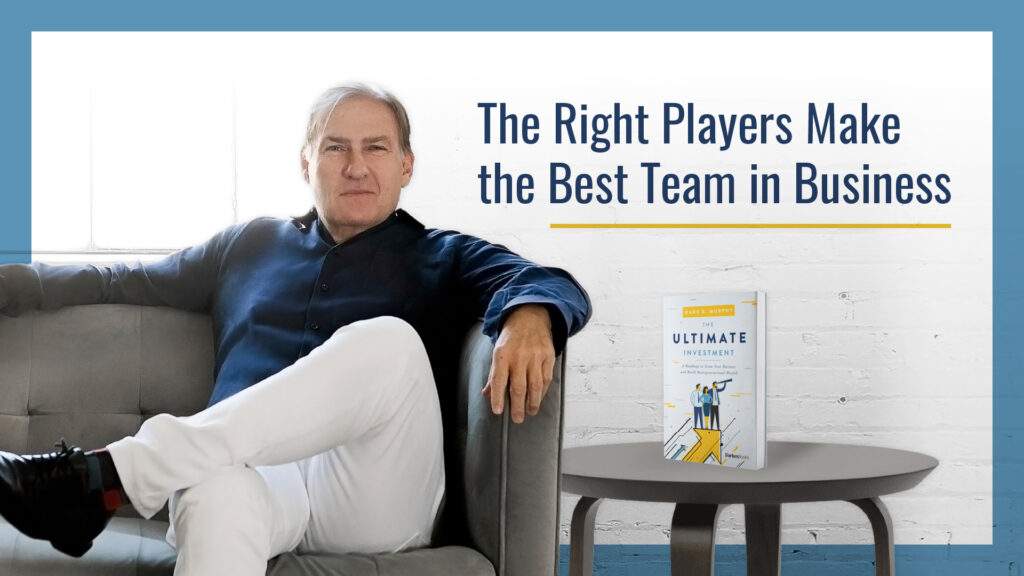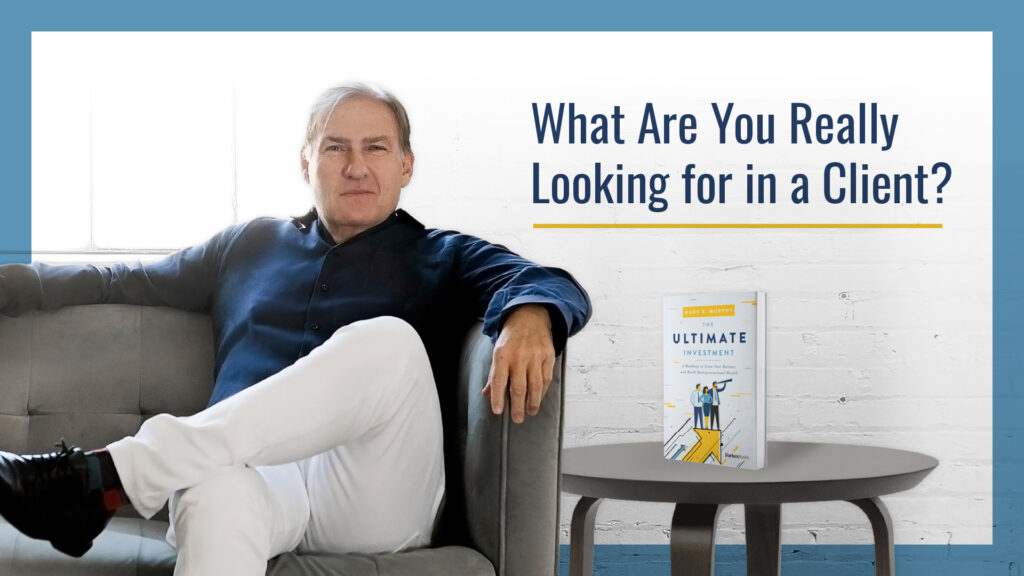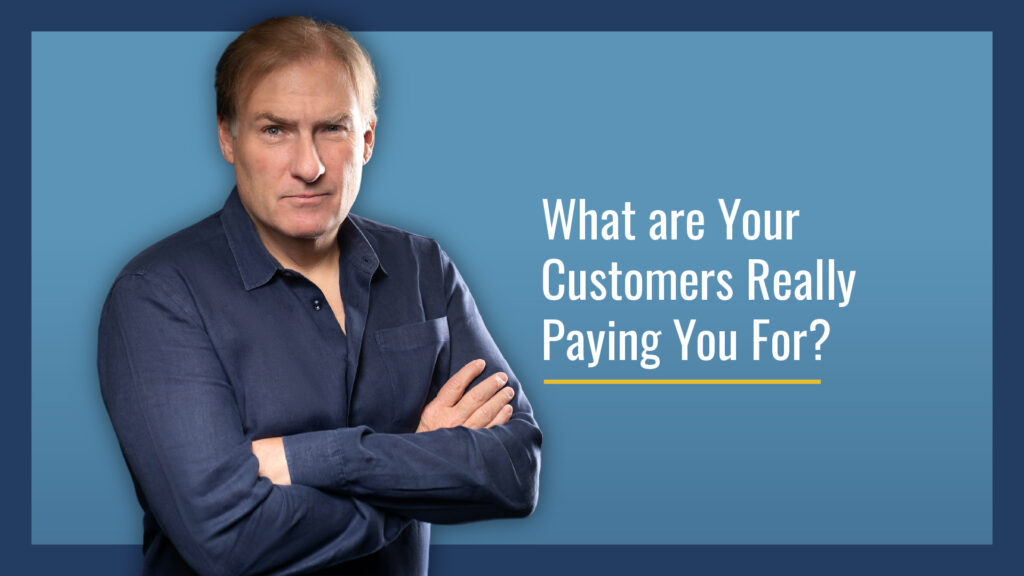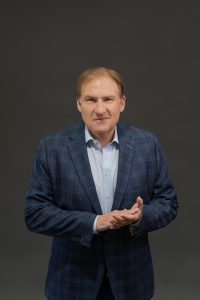With an entrepreneurial mindset, you can create a true business, reap financial benefits, and see your money and the quality of your life grow in positive directions. But just what exactly is an entrepreneurial mindset?
An entrepreneurial mindset is uncommon or extraordinary thinking, it’s thinking differently, it’s asking the big questions and thinking bigger. That’s the key to winning.
Winning come starts by creating a business—a real business—that eliminates or reduces costs and competition. That means getting your organization to a place where it can grow without being centered around you, the entrepreneur, and your ability to do the work or produce a function. It’s about getting past the stage where you’re basically self-employed or still running your business like a start-up. When your company is at the point where it employs ten or a couple hundred employees but still centers on your talent day-to-day, it cannot grow wealth for the business, for stakeholders, for you, or for future generations.
There is a difference between being someone who is self-employed and being an entrepreneur capable of growing wealth. When you’re self-employed, you just draw a paycheck every few weeks. That paycheck, minus taxes, monthly and annual bills, mortgage, groceries, and maybe a small amount into a 401(k) account or other investments, then leaves a bare minimum in your pocket. At that pace, some forty years later, the idea of a comfortable retirement is, at best, a still-distant dream. I’ve seen it too often with my clients—after decades of working hard to run a company, retirement boils down to a smaller home, one car instead of two, and five o’clock specials instead of five-star restaurants. In short, far fewer options. Likely not the retirement imagined after all those decades of leading a team, managing an office, and dealing with numbers all the while keeping customers happy.
Now, for some, a successful working life and retirement does equate to simple comfort—downsizing to a townhome instead of living in a luxurious house, visiting local museums instead of a trip to the Louvre, eating at home instead of dining out, an annual drive to see the grandkids instead of a Mediterranean cruise. But when someone hires me and my firm, we’re pretty sure the intent is not just to ensure minimal comforts for the short-term. They want a long, extraordinary retirement and life. They want more than just a job with a biweekly paycheck that covers expenses and little future planning, they don’t want to just exchange forty years of life for a small bank account.
As true entrepreneurs, they’re not the kind of people who just want to buy themselves a job. They want an entrepreneurial mindset—an investor mindset. They know wealth should not equate to the amount of time spent in the business. Their time, instead, should be freed up so they can grow their business, accumulate exponential wealth, and leave a legacy for future generations. They know that real freedom—as is so often equated with the entrepreneurial mindset—comes from overcoming the constraints of time.
Think about in simple math terms. If there are twenty-four hours in a day, and you’re already putting in twelve hours, how can you really commit more time to the job? You’re probably already eating in the office, are you going to sleep there too? Living and breathing work and only work, let’s face, makes for a pretty singular existence, no matter how innovative and exciting an idea you might be pursuing. If your plan is to double your workload in order to double your income, it doesn’t add up—twelve hours of work doubled to twenty-four hours of work equals, well, it doesn’t equal a life well-lived.
The strategies that make you a successful entrepreneur don’t involve putting in endless hours. It’s about leveraging human capital, technology, and alliance partners who may or may not be on your payroll to create an extension of yourself. By creating alliances with accountants, attorneys, bankers, other professionals with certain skill sets, and even various organizations, you can transfer some responsibilities from your shoulders to the shoulders of others.
That’s part of reframing of your idea of hard work. Within your organization, that means making sure everyone is working in their highest and best use, they’re focusing on their unique ability. An employee making $250,000 spending hours at the copy machine or ordering supplies is not the highest and best use of that professional.
Instead, look at continually hiring and training people to support the highest and best use rule. For instance, if your forte is in sales, then hire someone to handle the administrative pieces of a sales transaction; that allows you to spend more time building relationships and making those sales that are so vital to the success of the organization. Hiring and training people who are better suited to certain tasks within your responsibility allows you to continually attain your highest and best use. That goes for other members of the team too. Once you follow this process, you’ll end up with an organization that’s firing on all cylinders because everyone is working to their unique ability.
Remember the highest and best use rule when reviewing roles over time. You might find that a role needs to be modified, combined with another, or may no longer be necessary. A staff member suited to a specific role a decade ago may no longer be a best fit, but the role might be ideal for someone else in the organization. The same goes for the resources in your organization. Technology can aid in the evolution of your organization, allowing you to streamline and digitize mundane tasks and free up your human capital for more strategic roles.
Make no mistake: You’re not bringing on and best-fitting high performers to wear them down trying to make them perform at your 110 percent level. Nor is it time for you to simply fold your arms, nod your head at the wonderful work being done, and then go play golf or take an afternoon nap. Higher and better use is about growing the company, and it is used to align every person, element, and expense in the organization.
Highest and best also applies to financial resources. Entrepreneurs often make decisions based on the amount of money in the bank account, not on the rate of return for those funds. For example, if you put $5,000 into something, you should see at least a $20,000 or $25,000 return. That should be the critical analysis of whether your money is being put to the highest and best use. If you find yourself at the end of the year having to find ways to spend money to lower your tax burden, then you’ve wasted an entire year making unsound decisions based on emotion or circumstance instead of critical thinking or logic.
When my team and I show clients what their business, bank balances, and lives could look like if they were to shift away from their “day job” and no longer run the company full-time day-to-day, they see how it can instead become an important part of the portfolio of companies and investments that they own. When that happens, you’ll have partners to make decisions with you instead of taking on every decision on your own, a level of dependency on others yet independency for yourself that is one of the greatest perks of being an entrepreneur—and a key component to growing wealth. The more time you have, the more acutely you can start to focus on using it to grow your money.


